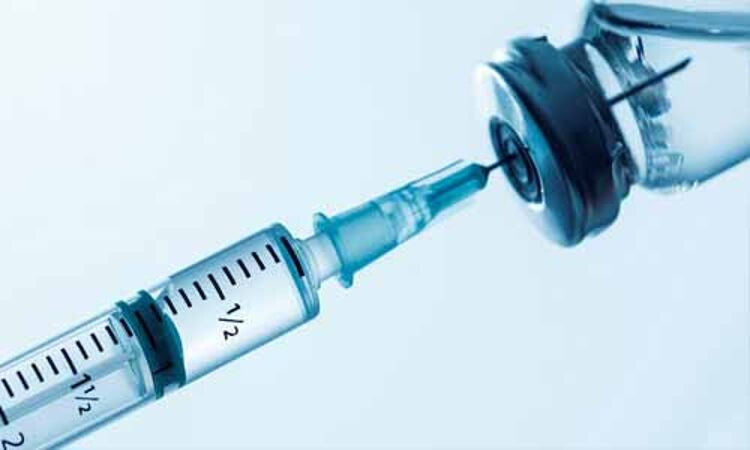- Home
- Medical news & Guidelines
- Anesthesiology
- Cardiology and CTVS
- Critical Care
- Dentistry
- Dermatology
- Diabetes and Endocrinology
- ENT
- Gastroenterology
- Medicine
- Nephrology
- Neurology
- Obstretics-Gynaecology
- Oncology
- Ophthalmology
- Orthopaedics
- Pediatrics-Neonatology
- Psychiatry
- Pulmonology
- Radiology
- Surgery
- Urology
- Laboratory Medicine
- Diet
- Nursing
- Paramedical
- Physiotherapy
- Health news
- Fact Check
- Bone Health Fact Check
- Brain Health Fact Check
- Cancer Related Fact Check
- Child Care Fact Check
- Dental and oral health fact check
- Diabetes and metabolic health fact check
- Diet and Nutrition Fact Check
- Eye and ENT Care Fact Check
- Fitness fact check
- Gut health fact check
- Heart health fact check
- Kidney health fact check
- Medical education fact check
- Men's health fact check
- Respiratory fact check
- Skin and hair care fact check
- Vaccine and Immunization fact check
- Women's health fact check
- AYUSH
- State News
- Andaman and Nicobar Islands
- Andhra Pradesh
- Arunachal Pradesh
- Assam
- Bihar
- Chandigarh
- Chattisgarh
- Dadra and Nagar Haveli
- Daman and Diu
- Delhi
- Goa
- Gujarat
- Haryana
- Himachal Pradesh
- Jammu & Kashmir
- Jharkhand
- Karnataka
- Kerala
- Ladakh
- Lakshadweep
- Madhya Pradesh
- Maharashtra
- Manipur
- Meghalaya
- Mizoram
- Nagaland
- Odisha
- Puducherry
- Punjab
- Rajasthan
- Sikkim
- Tamil Nadu
- Telangana
- Tripura
- Uttar Pradesh
- Uttrakhand
- West Bengal
- Medical Education
- Industry
Females, young adults report higher pain score with local anesthesia in dentistry: Study

Researchers have found in a new study that female subjects and the younger age group were more likely to report higher pain scores during local anesthesia administration regardless of the type of distraction used.
The study is published in the BMC Oral Health Journal.
Different distraction techniques have been used in dentistry and have shown great results in managing anxious pediatric patients specially during local anesthesia administration. One of the recently invented techniques is virtual reality.
Therefore, Osama M. Felemban and colleagues from the Pediatric Dentistry Department, Faculty of Dentistry, King Abdulaziz University, Jeddah, Saudi Arabia carried out the present study with the purpose to evaluate the effect of virtual reality distraction on anxiety and pain during buccal infiltration anesthesia in pediatric patients.
The authors included healthy, cooperative 6- to 12-year-old children requiring buccal infiltration anesthesia, all of whom were randomly assigned to a test or control group. A total of 50 subjects were included with a mean age of 8.4 ± 1.46 years. In the test group, local anesthesia was administered while the subjects were watching a cartoon video using virtual reality goggles. While, subjects in the control group watched a cartoon video on a screen during the administration of local anesthesia.
To assess anxiety in both groups, heart rate was recorded using a pulse oximeter at five time points:
(1) once the subject sets on the dental chair as a baseline;
(2) when video is on;
(3) at topical anesthesia application;
(4) during needle insertion;
(5) after the administration of local anesthesia.
The face, legs, activity, cry, consolability (FLACC) behavioral pain assessment scale and the Wong–Baker FACES pain rating scale were used to assess pain.
The findings of the study were-
a .Twenty-nine (58.0%) of the subjects were females.
b. The mean heart rate at all time points except baseline was significantly higher among the test group compared to the control group.
c. Multiple regression analysis showed that younger subjects and females had higher mean FLACC behavioral pain assessment scale scores (P = 0.034 and P = 0.004, respectively) regardless of the distraction technique used.
d. Younger subjects and subjects with higher baseline heart rate reported higher mean Wong–Baker FACES pain rating scale score (P = 0.031 and P = 0.010, respectively), controlling for all other variables.
Hence, it was concluded that "female subjects and the younger age group were more likely to report higher pain scores during local anesthesia administration regardless of the type of distraction used."
Dr. Nandita Mohan is a practicing pediatric dentist with more than 5 years of clinical work experience. Along with this, she is equally interested in keeping herself up to date about the latest developments in the field of medicine and dentistry which is the driving force for her to be in association with Medical Dialogues. She also has her name attached with many publications; both national and international. She has pursued her BDS from Rajiv Gandhi University of Health Sciences, Bangalore and later went to enter her dream specialty (MDS) in the Department of Pedodontics and Preventive Dentistry from Pt. B.D. Sharma University of Health Sciences. Through all the years of experience, her core interest in learning something new has never stopped. She can be contacted at editorial@medicaldialogues.in. Contact no. 011-43720751
Dr Kamal Kant Kohli-MBBS, DTCD- a chest specialist with more than 30 years of practice and a flair for writing clinical articles, Dr Kamal Kant Kohli joined Medical Dialogues as a Chief Editor of Medical News. Besides writing articles, as an editor, he proofreads and verifies all the medical content published on Medical Dialogues including those coming from journals, studies,medical conferences,guidelines etc. Email: drkohli@medicaldialogues.in. Contact no. 011-43720751


